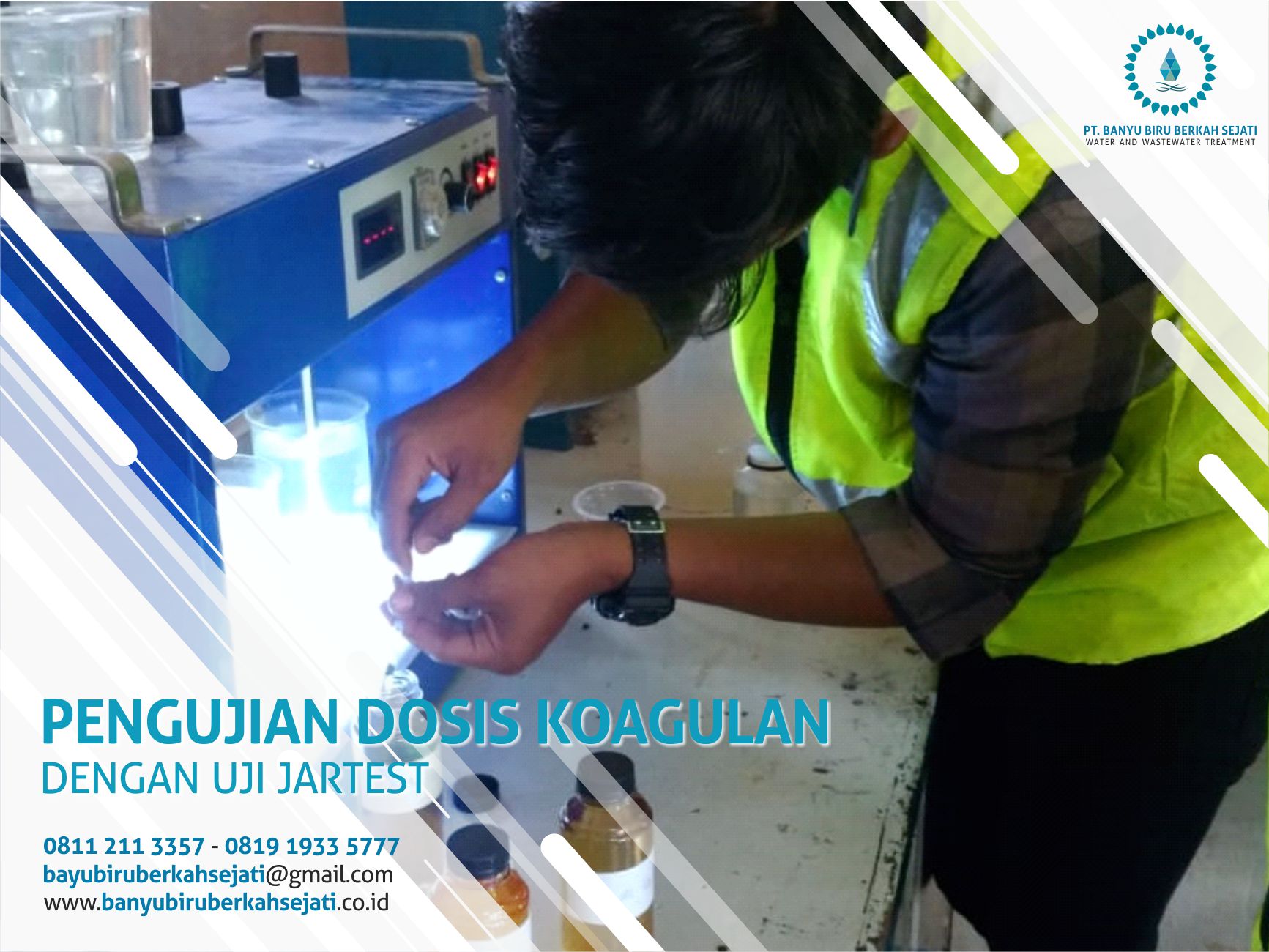Coagulation and Flocculation
Coagulation and Flocculation are two processes that are arranged into inseparable processes. In the coagulation process there is a destabilization of colloids and particles in water as a result of rapid stirring and affixing chemicals (called coagulants). Due to rapid stirring, stable colloids and particles become unstable because they break down into positively and negatively charged particles. The formation of positive and negative ions also results from the decomposition of the coagulant. This process continues with the formation of bonds between positive ions from coagulants (eg Al3 +) with negative ions from particles (eg OH–) and between positive ions from particles (eg Ca2 +) and negative ions from coagulants (eg SO42-) which causes the formation of floc nuclei (precipitate).
As soon as the floc core is formed, it is followed by the flocculation process, which is the incorporation of the floc core into a larger floc that allows the particles to settle. The combination of small flocks into large flocks occurs because of collisions between flocks. This collision occurs due to slow stirring.
The coagulation process is aided by chemicals called coagulants, while the coagulation process is assisted by flocculants. Coagulants that are often used are aluminum sulfate and iron salts. While flocculants that are often used are polyelectrolytes. The choice of coagulant and its concentration can be determined based on laboratory studies using jar tests to obtain optimum conditions.
Coagulation chemical reaction with alum coagulant
Al2(SO4)3.14H2O + 3Ca(HCO3)2 à 2Al(OH)3 + 3CaSO4 + 14H2O + 6CO2
Chemical reaction of coagulation with ferric sulfate coagulant
Fe2(SO4)3 + 3Ca(HCO3)2 à 2Fe(OH)3 + 3CaSO4 + 6CO2
Coagulation chemical reaction with ferric chloride coagulants
2FeCl3 + 3Ca(HCO3)2 à 2Fe(OH)3 + 3CaCl2 + 6CO2
Stirring
Pengadukan merupakan opersai yang mutlak pada proses koagulasi – flokulasi. Pengadukan cepat berperan penting dalam pencampuran koagulan dan destabilisasi partikel. Pengadukan lambat berperan dalam uapya penggabungan flok.
Stirring Type
The type of stirring can be grouped according to the stirring speed and the stirring method. Based on the speed, the stirring is divided into becoming a fast and slow stirring. Based on the method, stirring is divided into mechanical stirring, hydraulic stirring, and pneumatic stirring.
Stirring speed is an important parameter in stirring expressed by the speed gradient.
Stirring quickly
The purpose of rapid stirring in water treatment is to produce water turbulence so that it can disperse chemicals that will be dissolved in water. In general, fast stirring is stirring carried out on large speed gradients (300 to 1000 seconds-1) for 5 to 60 seconds or GTd values (Champ numbers) ranging from 300 to 1700. Specifically, the values of G and td depend on the intent or goal of fast stirring.
For the coagulation - flocculation process:
- Detention time = 20 - 60 seconds
- G = 1000 - 7000 seconds-1
Fast stirring can be done in three ways, namely:
- Mechanical stirring
- Hydraulic stirring
- Pneumatic stirring
Stirring is slow
Tujuan pengadukan lambat dalam pengolahan air adalah untuk menghasilkan gerakan air secara perlahan sehingga terjadi kontak antar partikel yang membentuk gabungan partikel hingga berukuran besar. Pengadukan lambat adalah pengadukan yang dilakukan dengan gradien kecepatan kecil (20 sampai 100 detik-1) selama 10 hingga 60 menit atau nilai GTd (bilangan champ ) berkisar antara 48000 hingga 210000. Untuk menghasilkan flok yang baik, gradien kecepatan diturunkan secara bertahap agar flok yang terbentuk tidak pecah lagi dan berkesempatan bergabung dengan yang lain membentuk gumpalan yang lebih besar.
Slow stirring can be done in several ways including:
- Mechanical stirring
- Hydraulic stirring
I hope the above article can be useful for colleagues, for more information contact us here


